Howdy, fellow travelers and springtime revelers. This edition of NN is focused on the occasional beauty that defines the vernal season in the Texas Hill Country. I use that qualifier because it seems that more often than not, drought imposes limits on our landscape. Fortunately, it’s not the case this year.
The internet and social media is flooded this year with breathtaking photos of fields of bluebonnets throughout Texas, and with good reason: this is one of the most prolific blooms I’ve ever seen. There are stretches of fields and highway rights-of-way that cause something bordering on sensory overload.
However, there’s another dramatic floral display occurring in our landscape…as demonstrated by the header photo above. Indian paintbrush (Castilleja coccinea) is beginning to compete with the bluebonnets.
Indian paintbrush is a very interesting species, as the article on the USDA website linked above describes. What appears to be blooms are actually modified leaves called bracts; the plants are capable of photosynthesis but they can also “steal” nutrients from surrounding vegetation; the “flowers” are edible, but the stems and roots can be toxic; and their color and structure is especially attractive hovering pollinators such as humminbirds and bees.
I used the word compete, but that’s probably the wrong term; there’s a pleasing contrast to the combination of the colors of bluebonnets with paintbrush, and they often share the same general space in the landscape. But there are instances where the paintbrush asserts its dominance.
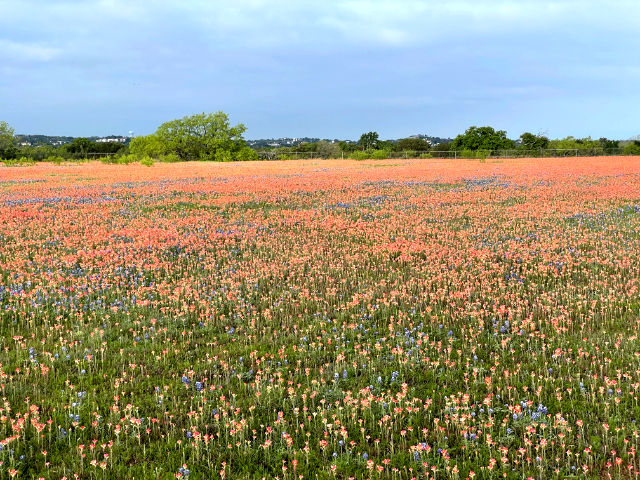
If one travels north along a stretch of Ferguson Road in Horseshoe Bay, they will encounter a field located across the road from the entrance to the Ferguson Power Plant that is blanketed by Indian paintbrush, along with a scattering of bluebonnets. This field is owned by the LCRA and is surrounded by a chainlink fence, and while I’m sure the fence wasn’t placed to protect the flowers, that’s a happy byproduct.
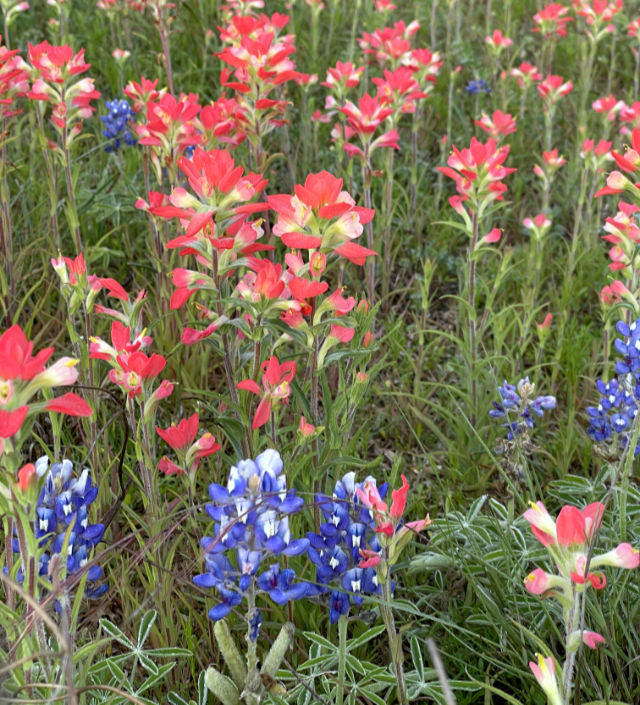

There’s also plenty of fauna action to go along with the flora. A few afternoons ago, Debbie and I were surprised by a commotion on our metal roof, the sound coming down the chimney in the living room. We guessed that buzzards were landing on the roof or on the chimney cap, as that’s happened in the past. And sure enough, while they had vacated the roof by the time I got my camera went outside, a handful of big birds were perched on our back fence and in the trees lining the creek.

Now, these guys don’t generally congregate for no reason, at least not during daylight hours (they do tend to roost in large groups at night), so I figured that something dead had caught their attention.
I crept over to the fence and carefully aimed my camera to the ground below, where a lone turkey vulture (Cathartes aura) was dining on the carcass of a squirrel.
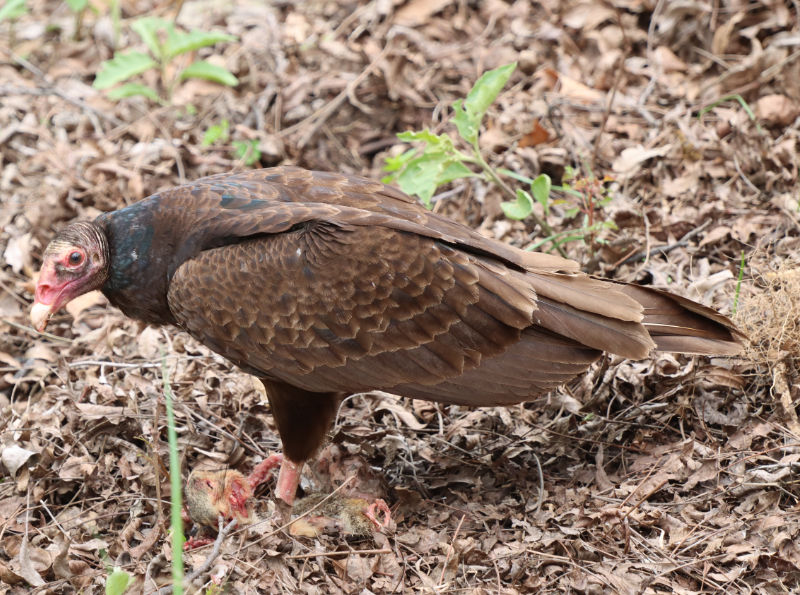
Turkey vultures, aka buzzards, are ugly, ungainly creatures on the ground and up close, although their aerial acrobatics are impressive. But perhaps I’m being overly judgmental about their looks. The coloration on this one — especially in the plumage — is actually prettier than you might think from a distance.
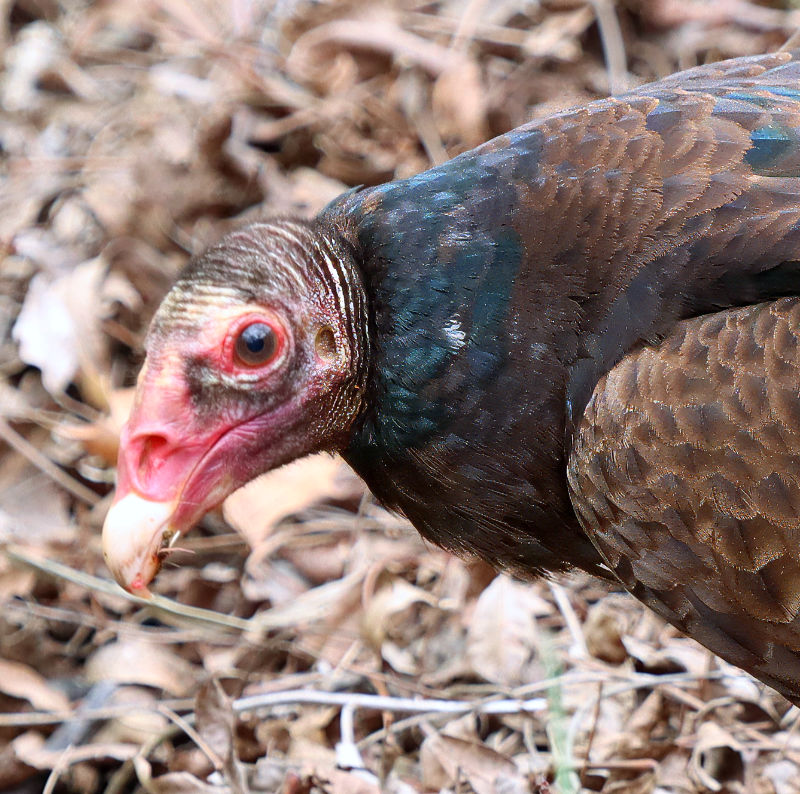
I mentioned that there was a group of buzzards, aka a committee, according to Wikipedia. But not all of them were turkey vultures. In fact, most were black vultures (Coragyps atratus). We’re seeing more and more of these birds around here, and it’s not a particularly pleasing development, from my perspective. While turkey vultures are almost exclusively carrion eaters (hence their reputation as the “garbage collectors of the sky” for their role in cleaning up roadkill), black vultures are know to take live prey, including newborn or sick mammals, including livestock, deer, and rabbits. They also have a poor sense of smell compared to turkey vultures, and often find their meals by following the latter and then fighting them for the food. In short, they’re lazy, poorly-educated gangsters.
In any event, the bird pictured above was apparently an alpha, regardless of species, as none of the other birds in attendance tried to wrest the carcass away from it.

Finally, the increasing warmth of spring brings out the reptile population around our house. Turtles and lizards become more plentiful (or at least visible).
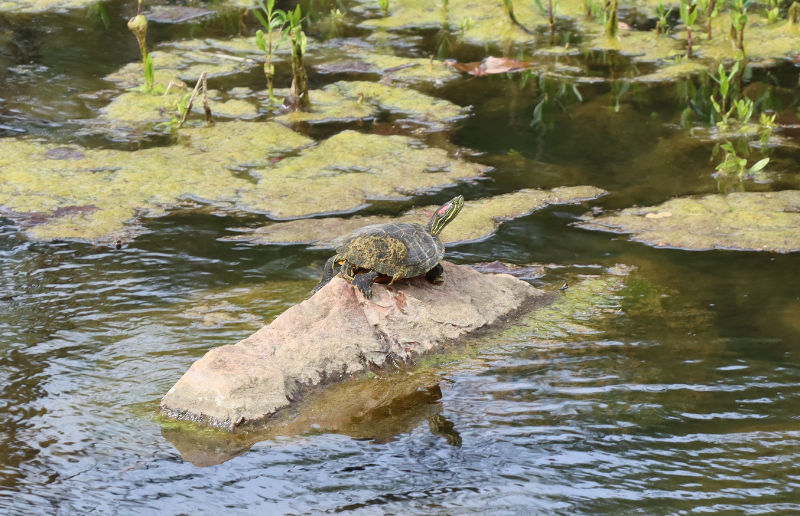
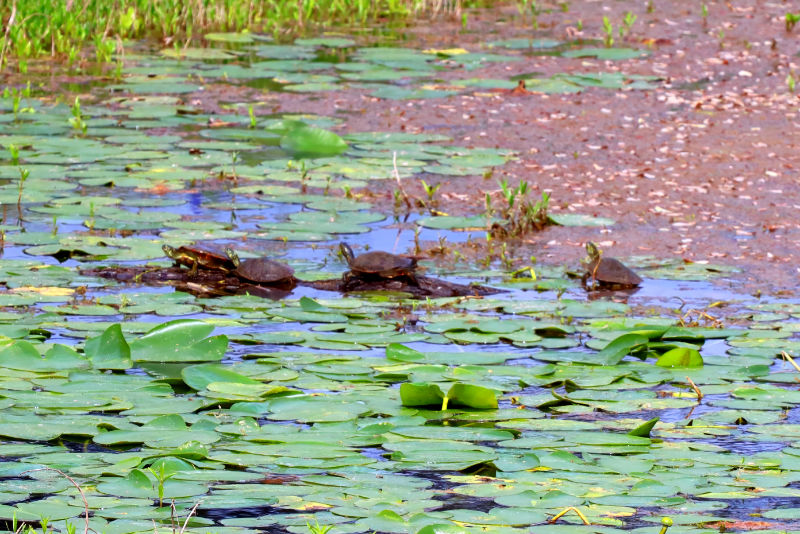

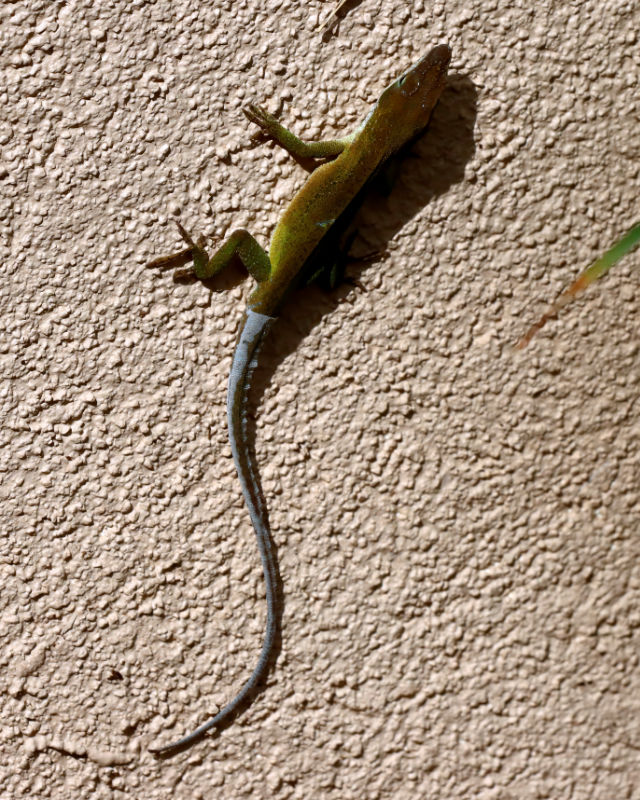
In the preceding photo, you’ll note that the color of the anole’s tail is markedly different than usual. This seems to indicate that it’s been regenerated, with the original version being broken off by either a predator or some accident. Interestingly but not surprisingly, this phenomenon has been the subject of a scientific study which yielded surprising AND interesting findings. It seems that the regenerated tail is far from duplicating the original, both in anatomy and functionality. For example, the new tail is a long tube of cartilage, while the original tail contains vertebrae. This in turn means that the new tail is less flexible than the original, although it still plays a role in providing stability for the lizard.
Along with the anoles, evidence of the fecundity of Texas spiny lizards is easily seen.
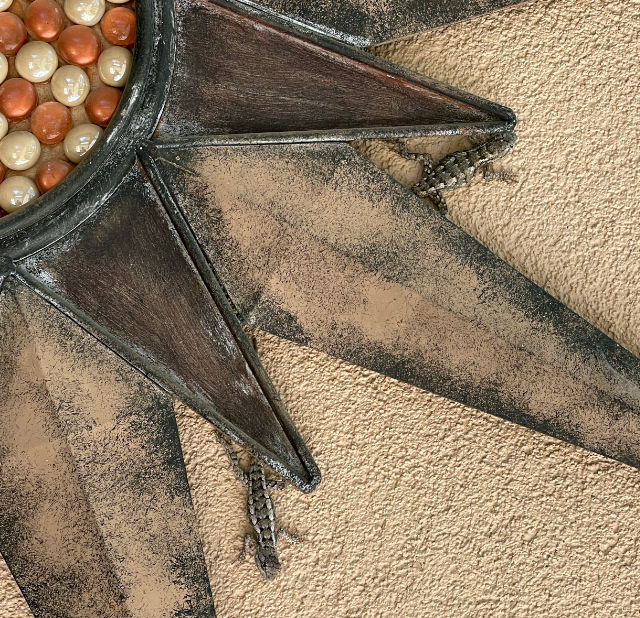
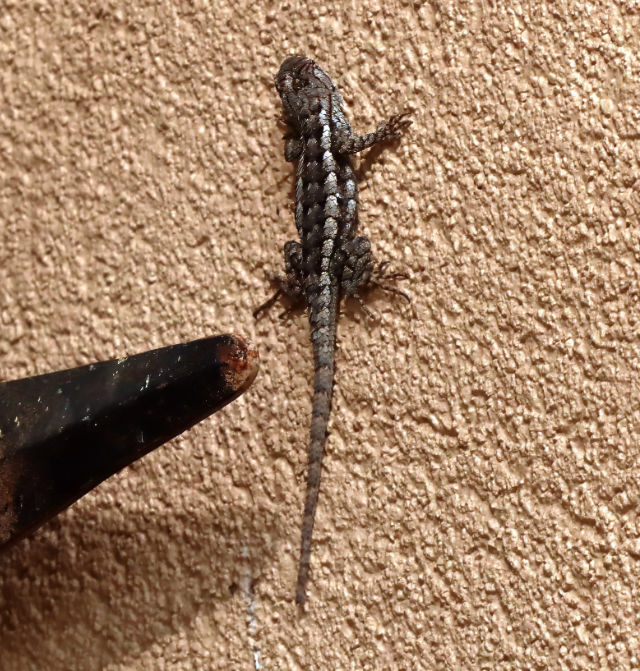

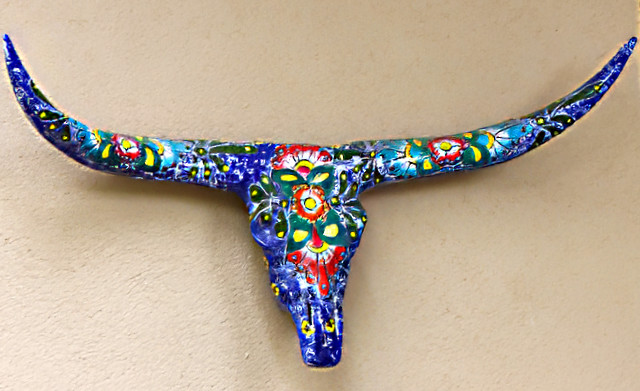
Discover more from The Fire Ant Gazette
Subscribe to get the latest posts sent to your email.


Thanks!
You’re more than welcome, Judy!
Phyllis loves learning so much & seeing your amazing photos. So do I!
Gene, y’all are putting a lot of pressure on me to be educational! 😄